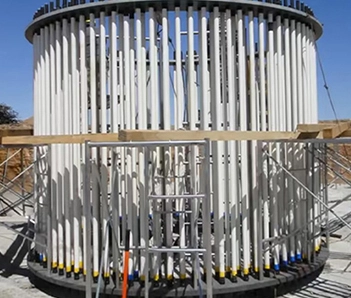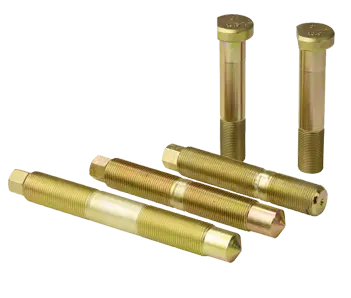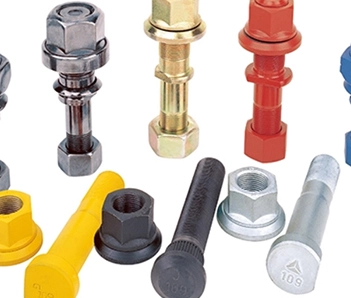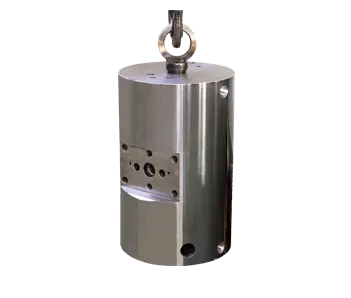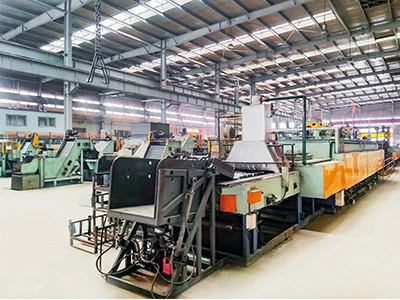
Tightening method
Also known as increased screwing method, suitable for important fastener inspection.
The tightening torque of the bolt connection of important parts should be inspected by tightening method according to the technical conditions of installation. The inspection method is as follows: Use the torque wrench to gradually increase the torque (avoid impact) when the nut or bolt just starts to produce a small rotation, its instantaneous torque value is the largest (to overcome the static friction force), continue to rotate, the torque value will fall back to a short stable state, the torque value of the short stable state is the torque obtained by the inspection.
Features: The operation is simple, but the quality inspection personnel must be skilled, that is, to uniform force, but also to accurately read the "transient stable state torque value".
Marking method
Also known as reset method, marking method, corner method, etc., applicable to key fastener inspection.
For critical fasteners, the marking method is used for inspection using torque wrenches. Before inspection, draw a line on the inspected bolt head or nut and the connecting part to confirm the original position of the bolt head or nut and the connecting part. Then send the bolt or nut off, and then use the torque wrench to tighten the bolt head or nut to the alignment position, then the maximum torque value multiplied by 0.9 ~ 1.1 value is the torque obtained by the inspection.
Features: The technical level is not high, must be crossed to determine the original position, and then loosen and tighten, the operation is cumbersome, not suitable for some fasteners with anti-loosening function.
According to the degree of impact on the safety and regulations of the vehicle, the torque of the final assembly department is divided into three levels, as shown in the following table:
| Rank | Definition |
| A | When the torque is poor, it will lead to the important function of the vehicle defect or loss, resulting in a major accident potential tightening point; Poor torque will lead to poor tightening points; SRS system fastening point. |
| B | A tightening point that, when the torch is poor, will result in important functional defects or loss, but does not create a major accident hazard. |
| C | Tightening points other than class A and B. |
According to the definition of each torque level, the guarantee methods of each torque level are specified as follows:
| Rank | Control item | Control accuracy (based on a fixed value) | Control method | Examples | Test frequency |
| A1 | Torque values and angles | 5% | On-line real-time control, that is, when tightening, the relevant torque value is entered into the computer or similar equipment through the sensor to determine whether it is qualified. And prompt the operator. All torque values are archived for easy traceability. | Tire tightening | Spot check twice per shift, 5 units each time |
| A2 | Torque values | 5% | 1, online control, that is, when tightening, the relevant torque value through the sensor input computer or similar equipment to determine whether qualified. And prompt the operator. All torque values are archived for easy traceability. 2. Control after fastening, that is, after the air plate or other tools are fastened (the air plate is adjusted to 8O% of the fixed value), the torque wrench is used in the next process to pull twice to ensure the tightening accuracy, and the torque wrench is checked every shift. | SRS system /ABS hard tube connection | |
| B | Torque values | 10% | After tightening control, that is, after the air plate or other tools are tightened (the air plate is adjusted to 8O% of the fixed value), the torque wrench is used in the next process to pull twice to ensure the tightening accuracy. The torque wrench is checked every shift. | Lock fastening | Spot check twice per shift, 2 sets each time. |
| C | Torque values | 20% | Tighten the air plate or other tools. | Tighten the cigarette lighter | Spot check twice per shift, 2 sets each time. |
1. Vibration; 2, soft connection; 3, surface roughness; 4, stress relief; 5, the precision of the thread; 6, the contact surface is too small; 7, gap elimination; 8, the torque exceeds the strength of the fastener, the fastener appears plastic deformation; 9. Temperature; 10, surface paint film
